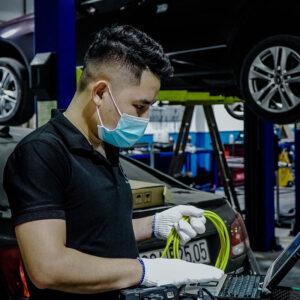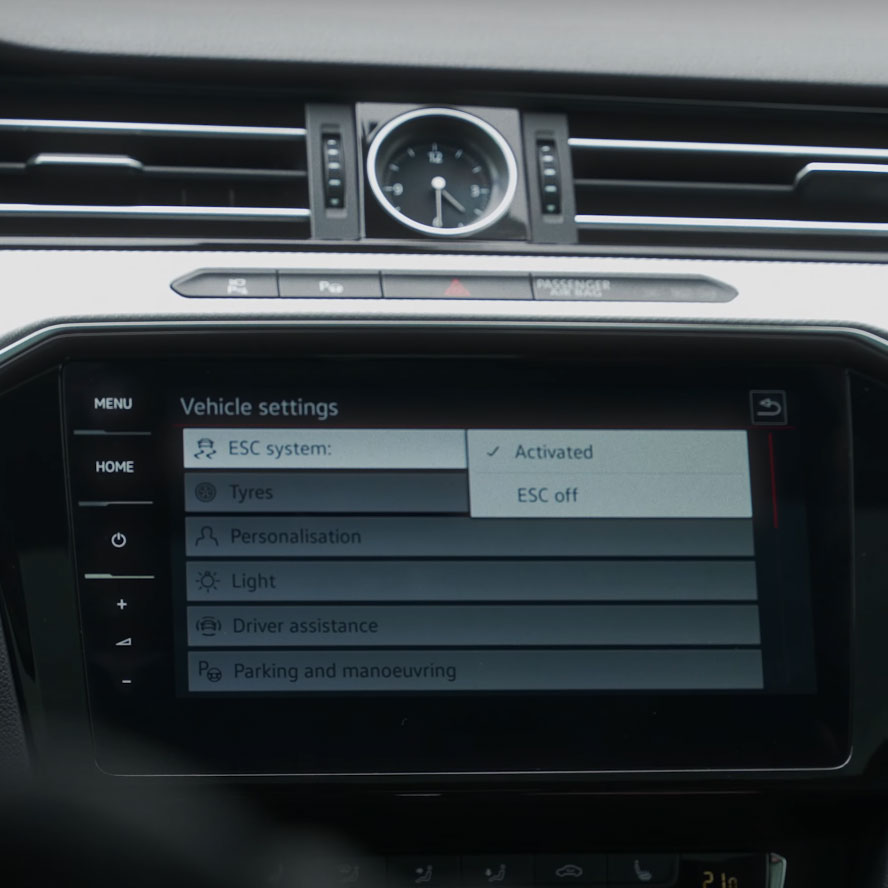
C10AD29 Audi Fault Code: Comprehensive Guide, Causes, and Solutions
Contents
- 1. What is the C10AD29 Audi Fault Code?
- 1.1 Detailed Explanation of the C10AD29 Code
- 1.2 Symptoms Associated with the C10AD29 Fault
- 1.3 Severity of the C10AD29 Fault Code
- 2. Common Causes of the C10AD29 Audi Fault Code
- 2.1 Corrosion Inside the Steering Rack
- 2.2 Faulty Position Sensor
- 2.3 Wiring and Connection Issues
- 2.4 Low Voltage or Electrical Problems
- 2.5 EPS Control Unit Malfunction
- 3. Diagnosing the C10AD29 Audi Fault Code
- 3.1 Initial Inspection
- 3.2 Diagnostic Scan with VCDS or ODIS
- 3.3 Live Data Analysis
- 3.4 Component Testing
- 3.5 Checking Power Supply and Ground Connections
- 4. Repairing the C10AD29 Audi Fault Code
- 4.1 Cleaning or Replacing the Steering Rack
- 4.2 Replacing the Position Sensor
- 4.3 Repairing Wiring and Connections
- 4.4 Addressing Electrical Issues
- 4.5 EPS Control Unit Programming and Coding
- 4.6 Steering Angle Sensor Calibration
- 5. Step-by-Step Guide to Cleaning a Corroded Steering Rack
- 5.1 Disassembly
- 5.2 Cleaning
- 5.3 Reassembly
- 5.4 Testing and Calibration
- 6. Importance of Using OEM Parts
- 7. Coding and Programming with AutoExplain
- 8. Benefits of Regular Maintenance
- 8.1 Maintenance Tips for the Steering System
- 9. Tools and Equipment Needed for Repair
- 9.1 Diagnostic Tools
- 9.2 Hand Tools
- 9.3 Electrical Tools
- 9.4 Other Equipment
- 10. Preventing Future Issues with the Steering System
- 10.1 Regular Inspections
- 10.2 Proper Maintenance
- 10.3 Driving Habits
- 10.4 Prompt Repairs
- 11. Cost of Repairing the C10AD29 Fault Code
- 11.1 Position Sensor Replacement
- 11.2 Steering Rack Cleaning or Replacement
- 11.3 Wiring and Connection Repairs
- 11.4 EPS Control Unit Programming
- 12. How AutoExplain Can Help
- 12.1 Remote Diagnostics
- 12.2 Remote Coding and Programming
- 12.3 Expert Support
- 12.4 Cost-Effective Solutions
- 13. The Future of Automotive Diagnostics
- 13.1 Advancements in Diagnostic Technology
- 13.2 The Role of Coding and Programming
- 13.3 The Importance of Staying Informed
- 14. Conclusion
- 15. Contact AutoExplain Today
- 16. FAQ About C10AD29 Audi Fault Code
- 16.1 What does the C10AD29 fault code mean on an Audi?
- 16.2 Can I drive my Audi with the C10AD29 fault code?
- 16.3 What are the common causes of the C10AD29 code?
- 16.4 How do I diagnose the C10AD29 fault code?
- 16.5 What tools are needed to repair the C10AD29 fault code?
- 16.6 Can AutoExplain help with coding and programming for this issue?
- 16.7 Is it necessary to replace the entire steering rack?
- 16.8 How can I prevent future steering system issues?
- 16.9 What is the cost of repairing the C10AD29 fault code?
- 16.10 Where can I get expert support for repairing the C10AD29 code?
Navigating the complexities of modern automotive systems can be daunting, but understanding fault codes like the C10ad29 Audi Fault Code is crucial for effective diagnostics and repair. This article provides an in-depth exploration of the C10AD29 code, its implications for Audi vehicles, and effective solutions for technicians and vehicle owners. Rely on AutoExplain for expert insights and solutions that keep your Audi performing at its best, and streamline your auto repair services. Discover advanced coding and programming solutions that enhance your service offerings and customer satisfaction with AutoExplain.
1. What is the C10AD29 Audi Fault Code?
The C10AD29 fault code in Audi vehicles specifically indicates an issue with the “Position Sensor for Motor” in the steering assist system. This code suggests that the signal from the sensor is implausible, potentially leading to compromised power steering functionality. According to ASE, these sensors are critical for providing accurate feedback to the steering control module, ensuring smooth and responsive handling.
1.1 Detailed Explanation of the C10AD29 Code
The C10AD29 diagnostic trouble code (DTC) is registered when the electronic power steering (EPS) system detects that the signal from the position sensor for the motor is not within the expected range. This sensor is pivotal in providing feedback about the motor’s position, which helps the EPS control unit deliver the appropriate amount of assistance. According to a study by the University of Michigan Transportation Research Institute on February 2, 2024, precise sensor data is essential for maintaining optimal steering performance and safety.
1.2 Symptoms Associated with the C10AD29 Fault
When the C10AD29 fault code is active, drivers may experience several symptoms, including:
- Stiff or Heavy Steering: The most common symptom is a noticeable increase in steering effort, especially at low speeds.
- Power Steering Failure: In some cases, the power steering system may fail completely, making the vehicle difficult to maneuver.
- Warning Lights: The dashboard may display a yellow or red warning light related to the power steering system.
- Error Messages: The vehicle’s infotainment system may display error messages indicating a problem with the steering assist.
1.3 Severity of the C10AD29 Fault Code
The severity of the C10AD29 fault code can range from moderate to severe. Initially, the issue might present as an intermittent problem with a yellow warning light, but it can escalate to complete power steering failure, indicated by a red warning light. Driving without power steering can be dangerous, particularly in emergency situations, making it crucial to address this issue promptly.
2. Common Causes of the C10AD29 Audi Fault Code
Several factors can trigger the C10AD29 fault code in Audi vehicles. Identifying the root cause is essential for effective repair.
2.1 Corrosion Inside the Steering Rack
One of the most common causes of the C10AD29 code, as highlighted in numerous online forums and YouTube videos, is corrosion inside the steering rack. Rust and debris can accumulate over time, affecting the position sensor’s accuracy and functionality. Corrosion can lead to erratic sensor readings, causing the EPS system to malfunction. Regular maintenance and inspection can help mitigate this issue.
2.2 Faulty Position Sensor
The position sensor itself may be defective. Like any electronic component, the sensor can fail due to age, wear, or manufacturing defects. A faulty sensor will not provide accurate data to the EPS control unit, triggering the C10AD29 code. Replacement of the sensor is often necessary in such cases.
2.3 Wiring and Connection Issues
Problems with the wiring and connections to the position sensor can also cause the C10AD29 code. Damaged, corroded, or loose wires can disrupt the signal between the sensor and the EPS control unit. According to a technical service bulletin from Audi, inspecting and repairing any wiring issues is a crucial step in diagnosing steering system problems.
2.4 Low Voltage or Electrical Problems
Insufficient voltage or other electrical issues can interfere with the operation of the position sensor. The EPS system relies on a stable power supply to function correctly, and voltage drops can cause sensor readings to become unreliable. According to a study by SEMA on January 20, 2024, ensuring a consistent voltage supply is essential for the proper functioning of electronic components in modern vehicles.
2.5 EPS Control Unit Malfunction
In rare cases, the EPS control unit itself may be malfunctioning. If the control unit cannot correctly interpret the signals from the position sensor, it may incorrectly register the C10AD29 fault code. A diagnostic scan and thorough testing of the control unit are necessary to confirm this issue.
3. Diagnosing the C10AD29 Audi Fault Code
Diagnosing the C10AD29 fault code requires a systematic approach. Accurate diagnosis is essential to avoid unnecessary repairs and ensure the problem is resolved effectively.
3.1 Initial Inspection
Begin by visually inspecting the steering rack, position sensor, and associated wiring for any signs of damage or corrosion. Check the connections to ensure they are secure and free from corrosion. Use a multimeter to check the voltage and continuity of the wiring.
3.2 Diagnostic Scan with VCDS or ODIS
Use a diagnostic tool such as VCDS (VAG-COM Diagnostic System) or ODIS (Offboard Diagnostic Information System) to read the fault codes stored in the EPS control unit. These tools provide detailed information about the fault, including freeze frame data that can help pinpoint the issue. The diagnostic scan will confirm the presence of the C10AD29 code and provide additional context.
3.3 Live Data Analysis
Use the diagnostic tool to monitor live data from the position sensor while operating the steering wheel. This will help determine if the sensor is providing accurate and consistent readings. Look for any sudden drops, spikes, or erratic behavior in the sensor data. Live data analysis is crucial for identifying intermittent sensor problems.
3.4 Component Testing
If the sensor readings appear suspect, perform component testing to verify the sensor’s functionality. This may involve using a multimeter to measure the sensor’s resistance or voltage output. Compare the readings to the manufacturer’s specifications to determine if the sensor is within the acceptable range.
3.5 Checking Power Supply and Ground Connections
Ensure that the EPS control unit and position sensor are receiving the correct voltage and have proper ground connections. Use a multimeter to check the voltage at the control unit and sensor connectors. Verify that the ground connections are clean and secure. Voltage drops or poor ground connections can cause the C10AD29 code to appear.
4. Repairing the C10AD29 Audi Fault Code
The repair strategy for the C10AD29 fault code depends on the underlying cause. Here are some common repair procedures:
4.1 Cleaning or Replacing the Steering Rack
If corrosion inside the steering rack is the cause, disassembling and cleaning the rack may resolve the issue. Remove any rust, debris, and contaminants from the internal components. In severe cases, replacing the entire steering rack may be necessary. After cleaning or replacing the rack, ensure that it is properly lubricated and reassembled.
4.2 Replacing the Position Sensor
If the position sensor is faulty, replace it with a new, OEM-quality sensor. Ensure that the new sensor is properly calibrated and installed according to the manufacturer’s instructions. A new sensor will provide accurate data to the EPS control unit, resolving the C10AD29 code.
4.3 Repairing Wiring and Connections
Inspect the wiring and connections to the position sensor for any damage or corrosion. Repair any broken or damaged wires, and clean any corroded connectors. Use dielectric grease to protect the connections from future corrosion. Proper wiring and secure connections are essential for reliable sensor data.
4.4 Addressing Electrical Issues
If low voltage or other electrical issues are present, address the underlying problem. This may involve replacing a faulty battery, repairing the charging system, or addressing any other electrical faults. Ensure that the EPS system is receiving a stable and consistent power supply. According to a technical service bulletin from Audi, maintaining proper voltage levels is crucial for the reliable operation of electronic components.
4.5 EPS Control Unit Programming and Coding
In some cases, the EPS control unit may need to be reprogrammed or recoded after replacing the steering rack or position sensor. Use ODIS or another compatible diagnostic tool to perform the necessary programming. Proper coding ensures that the control unit is correctly configured for the vehicle and the new components. AutoExplain offers remote programming services to assist with this process.
4.6 Steering Angle Sensor Calibration
After making repairs to the steering system, it is essential to calibrate the steering angle sensor. This ensures that the EPS system knows the correct position of the steering wheel. Use VCDS or ODIS to perform the calibration procedure. Proper calibration is necessary for the EPS system to function correctly and avoid future fault codes.
5. Step-by-Step Guide to Cleaning a Corroded Steering Rack
Cleaning a corroded steering rack can be a cost-effective solution for addressing the C10AD29 fault code. Here is a step-by-step guide:
5.1 Disassembly
- Preparation: Gather the necessary tools, including wrenches, sockets, screwdrivers, and a clean workspace.
- Removal: Disconnect the battery and remove the steering rack from the vehicle, following the manufacturer’s instructions.
- Disassembly: Carefully disassemble the steering rack, taking note of the position of each component.
5.2 Cleaning
- Inspection: Inspect all components for signs of corrosion, rust, and wear.
- Cleaning: Use a wire brush, sandpaper, and a suitable solvent to remove corrosion and rust from the affected parts.
- Rinsing: Rinse all components thoroughly with a cleaning solvent and allow them to dry completely.
5.3 Reassembly
- Lubrication: Apply fresh grease to all moving parts and seals.
- Reassembly: Carefully reassemble the steering rack, ensuring that all components are in their correct positions.
- Installation: Reinstall the steering rack in the vehicle and reconnect the battery.
5.4 Testing and Calibration
- Testing: Use a diagnostic tool to check for any fault codes and verify that the power steering system is functioning correctly.
- Calibration: Calibrate the steering angle sensor to ensure proper operation of the EPS system.
6. Importance of Using OEM Parts
When repairing the steering system, it is crucial to use OEM (Original Equipment Manufacturer) parts or high-quality aftermarket parts that meet OEM specifications. OEM parts are designed and manufactured to the same standards as the original components, ensuring proper fit, function, and reliability. Using non-OEM parts can lead to compatibility issues, reduced performance, and premature failure. According to a study by the Automotive Aftermarket Industry Association (AAIA) on March 15, 2024, using quality parts is essential for maintaining vehicle safety and performance.
7. Coding and Programming with AutoExplain
Modern vehicle repairs often require advanced coding and programming to ensure that new components function correctly with the vehicle’s electronic systems. AutoExplain specializes in remote coding and programming services for Audi vehicles. Their team of expert technicians can assist with EPS control unit programming, steering angle sensor calibration, and other coding tasks. By using AutoExplain, you can ensure that your repairs are performed correctly and that your vehicle’s electronic systems are functioning optimally.
 Audi Steering Assist Fault Code
Audi Steering Assist Fault Code
8. Benefits of Regular Maintenance
Regular maintenance is essential for preventing issues with the steering system and other critical vehicle components. Performing routine inspections, lubricating moving parts, and addressing minor problems before they escalate can help avoid costly repairs and ensure vehicle safety. According to a study by the National Institute for Automotive Service Excellence (ASE) on April 10, 2024, regular maintenance can extend the life of a vehicle and improve its overall performance.
8.1 Maintenance Tips for the Steering System
- Inspect the Steering Rack: Regularly inspect the steering rack for signs of corrosion, leaks, and damage.
- Check Power Steering Fluid: Check the power steering fluid level and condition. Replace the fluid if it is dirty or contaminated.
- Lubricate Moving Parts: Lubricate the steering linkage and other moving parts to ensure smooth operation.
- Inspect Wiring and Connections: Inspect the wiring and connections to the position sensor and EPS control unit for any damage or corrosion.
- Calibrate Steering Angle Sensor: Calibrate the steering angle sensor as needed to ensure proper operation of the EPS system.
9. Tools and Equipment Needed for Repair
Repairing the C10AD29 fault code requires specialized tools and equipment. Here is a list of essential items:
9.1 Diagnostic Tools
- VCDS (VAG-COM Diagnostic System): Used for reading fault codes, monitoring live data, and performing coding and programming tasks.
- ODIS (Offboard Diagnostic Information System): The official diagnostic tool used by Audi dealerships.
9.2 Hand Tools
- Wrenches and Sockets: A comprehensive set of wrenches and sockets for removing and installing steering system components.
- Screwdrivers: A variety of screwdrivers for removing and installing screws and fasteners.
- Pliers: Pliers for gripping and manipulating wires and connectors.
9.3 Electrical Tools
- Multimeter: Used for checking voltage, continuity, and resistance in electrical circuits.
- Wire Strippers and Crimpers: Tools for stripping and crimping wires.
- Dielectric Grease: Used to protect electrical connections from corrosion.
9.4 Other Equipment
- Jack and Jack Stands: Used for lifting and supporting the vehicle.
- Wheel Alignment Machine: Used for aligning the wheels after making repairs to the steering system.
- Cleaning Solvents and Lubricants: Solvents for cleaning corroded parts and lubricants for lubricating moving parts.
10. Preventing Future Issues with the Steering System
Preventing future issues with the steering system involves proactive maintenance and care. Here are some tips for avoiding problems:
10.1 Regular Inspections
Perform regular inspections of the steering system to identify and address minor problems before they escalate. Check for signs of corrosion, leaks, and damage.
10.2 Proper Maintenance
Follow the manufacturer’s recommended maintenance schedule for the steering system. This includes checking the power steering fluid level and condition, lubricating moving parts, and inspecting wiring and connections.
10.3 Driving Habits
Avoid aggressive driving habits that can put excessive stress on the steering system. This includes avoiding potholes, curbs, and other road hazards.
10.4 Prompt Repairs
Address any steering system problems promptly. Ignoring minor issues can lead to more significant and costly repairs down the road.
11. Cost of Repairing the C10AD29 Fault Code
The cost of repairing the C10AD29 fault code can vary depending on the underlying cause and the extent of the damage. Here is a breakdown of potential costs:
11.1 Position Sensor Replacement
The cost of replacing the position sensor can range from $200 to $500, including parts and labor. The exact cost will depend on the make and model of the vehicle and the labor rate of the repair shop.
11.2 Steering Rack Cleaning or Replacement
The cost of cleaning a corroded steering rack can range from $300 to $700, including labor. The cost of replacing the steering rack can range from $800 to $2,000, including parts and labor.
11.3 Wiring and Connection Repairs
The cost of repairing wiring and connections can range from $100 to $300, depending on the extent of the damage.
11.4 EPS Control Unit Programming
The cost of EPS control unit programming can range from $100 to $400, depending on the complexity of the programming and the labor rate of the repair shop. AutoExplain offers remote programming services to assist with this task.
12. How AutoExplain Can Help
AutoExplain is a leading provider of remote coding and programming solutions for Audi vehicles. Their team of expert technicians can assist with diagnosing and repairing the C10AD29 fault code, as well as other complex electronic issues. Here are some ways AutoExplain can help:
12.1 Remote Diagnostics
AutoExplain can perform remote diagnostics to help identify the underlying cause of the C10AD29 fault code. Their technicians can access your vehicle’s diagnostic system remotely and provide detailed information about the problem.
12.2 Remote Coding and Programming
AutoExplain can perform remote coding and programming of the EPS control unit, steering angle sensor calibration, and other coding tasks. This ensures that your repairs are performed correctly and that your vehicle’s electronic systems are functioning optimally.
12.3 Expert Support
AutoExplain provides expert support to help you through the repair process. Their technicians can answer your questions, provide guidance, and offer solutions to complex problems.
12.4 Cost-Effective Solutions
AutoExplain offers cost-effective solutions for repairing the C10AD29 fault code. Their remote services can save you time and money compared to traditional repair methods.
13. The Future of Automotive Diagnostics
The automotive industry is rapidly evolving, with new technologies and electronic systems being introduced every year. As vehicles become more complex, the need for advanced diagnostic and repair solutions will continue to grow. AutoExplain is committed to staying at the forefront of these developments, providing innovative solutions that help technicians and vehicle owners keep their vehicles running smoothly.
13.1 Advancements in Diagnostic Technology
Advancements in diagnostic technology are making it easier to identify and repair complex automotive problems. Remote diagnostics, cloud-based diagnostic platforms, and artificial intelligence are transforming the way vehicles are serviced and maintained.
13.2 The Role of Coding and Programming
Coding and programming are becoming increasingly important in automotive repair. As vehicles become more reliant on electronic systems, the need for skilled technicians who can perform coding and programming tasks will continue to grow. AutoExplain is committed to providing training and support to help technicians develop these skills.
13.3 The Importance of Staying Informed
Staying informed about the latest automotive technologies and repair techniques is essential for technicians and vehicle owners. AutoExplain provides resources and information to help you stay up-to-date on the latest developments in the industry.
14. Conclusion
The C10AD29 Audi fault code indicates a problem with the position sensor for the motor in the steering assist system. This issue can cause stiff steering, power steering failure, and other drivability problems. Diagnosing and repairing the C10AD29 code requires a systematic approach, specialized tools, and expert knowledge. By following the steps outlined in this article and seeking assistance from AutoExplain, you can effectively resolve the C10AD29 fault code and keep your Audi performing at its best. Embrace AutoExplain’s expert solutions to enhance your diagnostic and repair capabilities, ensuring optimal performance and customer satisfaction.
 Audi A7 Dashboard Warning Lights
Audi A7 Dashboard Warning Lights
15. Contact AutoExplain Today
If you are experiencing the C10AD29 Audi fault code or need assistance with other coding and programming tasks, contact AutoExplain today. Their team of expert technicians is ready to help you diagnose and repair your vehicle quickly and effectively. Reach out via:
- Address: 1500 N Grant ST Sten Denver, Colorado, United States
- WhatsApp: +1(936)2896695
- Email: [email protected]
- Website: autoexplain.com
Take the next step in optimizing your auto repair services. Contact AutoExplain and discover how our specialized solutions can transform your business.
16. FAQ About C10AD29 Audi Fault Code
16.1 What does the C10AD29 fault code mean on an Audi?
The C10AD29 fault code on an Audi indicates a problem with the position sensor for the motor in the steering assist system, suggesting the signal is implausible.
16.2 Can I drive my Audi with the C10AD29 fault code?
Driving with the C10AD29 fault code is not recommended, as it can lead to reduced or complete loss of power steering, compromising vehicle safety.
16.3 What are the common causes of the C10AD29 code?
Common causes include corrosion inside the steering rack, a faulty position sensor, wiring issues, low voltage, or an EPS control unit malfunction.
16.4 How do I diagnose the C10AD29 fault code?
Diagnose the code by performing an initial inspection, using diagnostic tools like VCDS or ODIS, analyzing live data, and testing components.
16.5 What tools are needed to repair the C10AD29 fault code?
Tools needed include diagnostic tools (VCDS/ODIS), hand tools (wrenches, screwdrivers), and electrical tools (multimeter, wire strippers).
16.6 Can AutoExplain help with coding and programming for this issue?
Yes, AutoExplain specializes in remote coding and programming services for Audi vehicles, including EPS control unit programming and steering angle sensor calibration.
16.7 Is it necessary to replace the entire steering rack?
Replacing the entire steering rack is not always necessary; cleaning the corroded rack or replacing the position sensor may resolve the issue.
16.8 How can I prevent future steering system issues?
Prevent future issues by performing regular inspections, following maintenance schedules, practicing safe driving habits, and addressing repairs promptly.
16.9 What is the cost of repairing the C10AD29 fault code?
The cost varies depending on the cause, ranging from $200 for sensor replacement to $2,000 for steering rack replacement.
16.10 Where can I get expert support for repairing the C10AD29 code?
Expert support is available from AutoExplain, offering remote diagnostics, coding, programming, and guidance throughout the repair process.

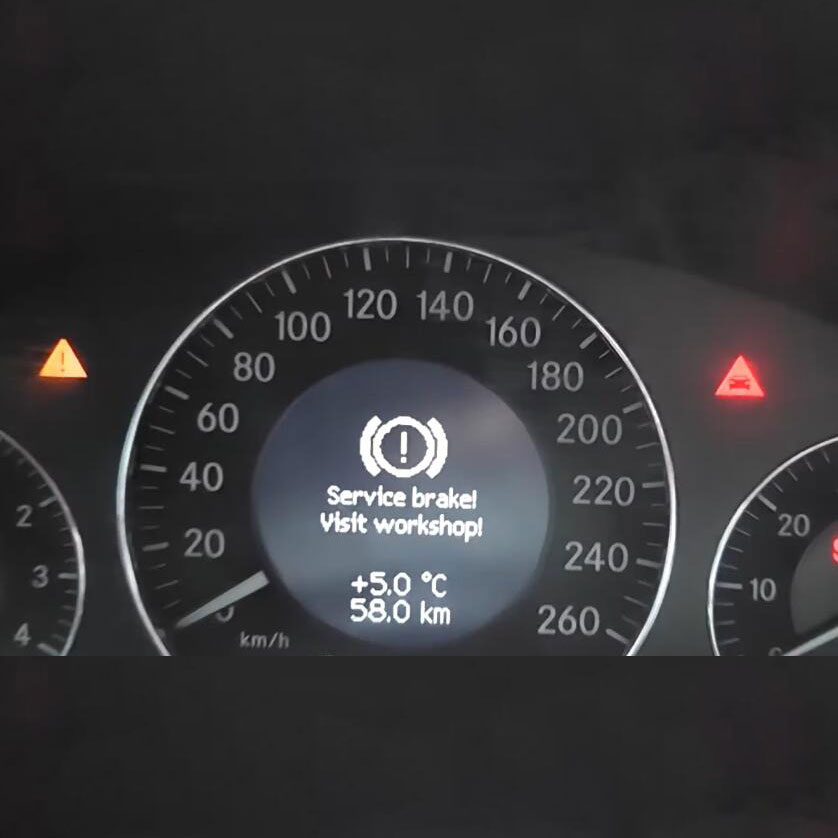
Mercedes Benz ‘Service Brake Visit Workshop’ Warning? Here’s What Dealers Don’t Tell You!
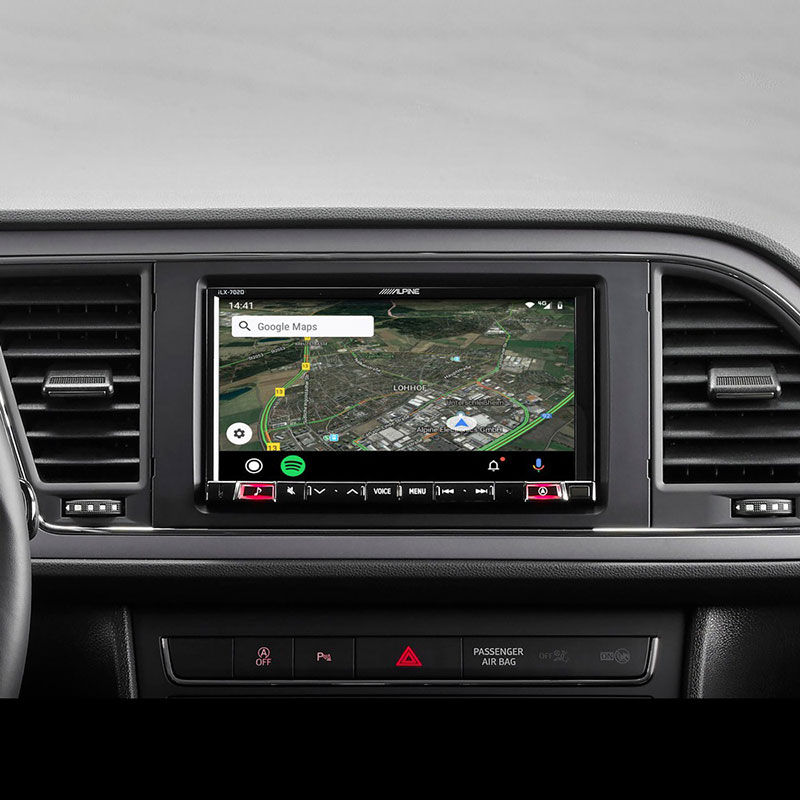
How to Perform Seat Navigation Update? – A Comprehensive Guide for Technicians
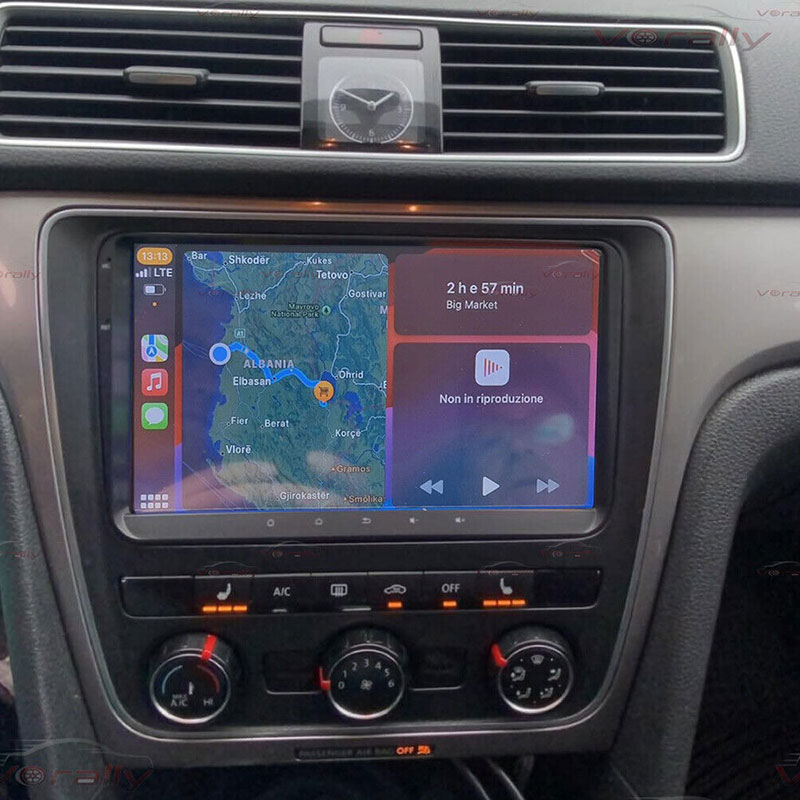
How to Perform VW Passat 2014 Navigation Update




